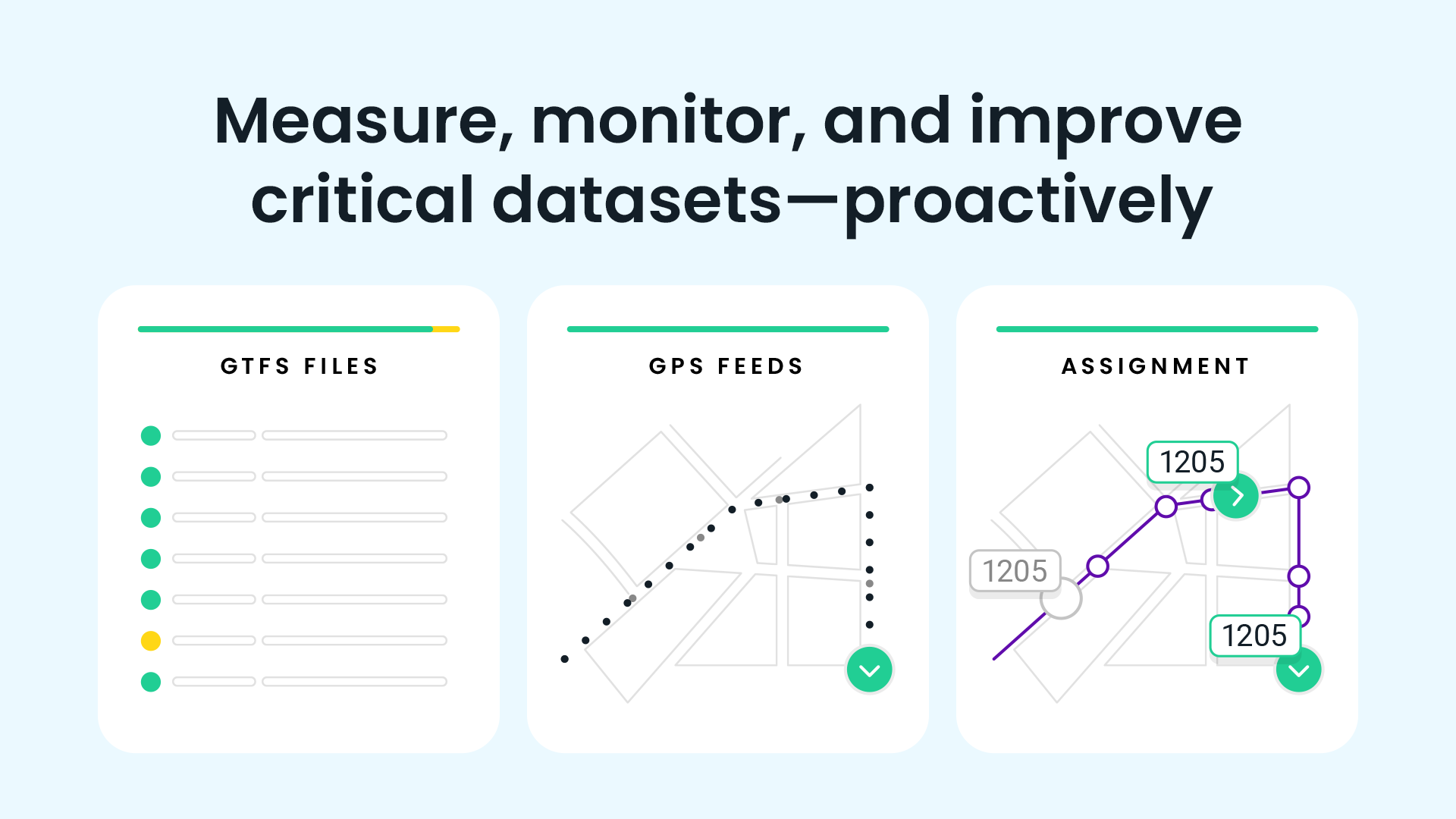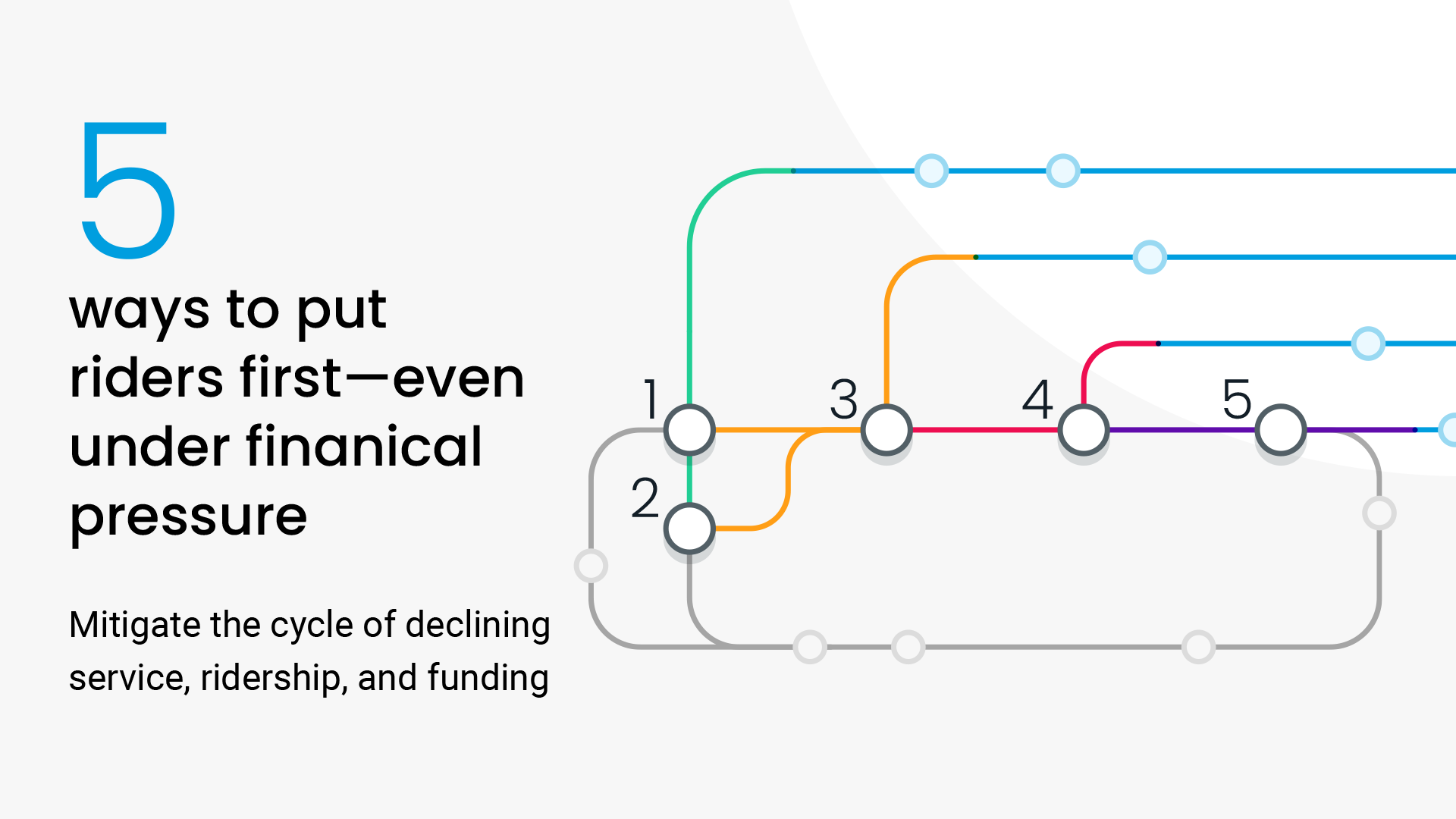
July 22, 2021
Introducing Detours in Service Adjustments and Maps in Onboard App

July 22, 2021
Introducing Detours in Service Adjustments and Maps in Onboard App
July 22, 2021
Introducing Detours in Service Adjustments and Maps in Onboard App
Swiftly Takes on Some of Riders’ and Agencies' Biggest Frustrations
Staying on course is one of the most fundamental responsibilities of a bus operator. Yet in many situations, correctly navigating a route can be a challenge. Whether it’s a new operator unfamiliar with a route, an experienced operator working a new route, or even a veteran operator on an unplanned detour, making a wrong turn is common. And when a 60-foot bus makes a wrong turn, it can be dangerous and expensive to get it back on track, not to mention that it's almost always a bad experience for passengers.
Detours are also a major part of running transit service. Unfortunately for transit riders, detours are also a major source of frustration. According to a UC Berkeley survey, transit riders cite onboard delays and unexpected waits -- two problems that are tightly connected with detours -- as their top frustrations with public transit. Whether it’s due to improperly updated signage, invalidated printed schedules, or inaccurate information shown in rider apps, riders often don’t get the information they need about detours until it’s too late.
Detours are about to become much more common in the coming months as cities receive billions in federal infrastructure dollars and begin repairs on roads, bridges, and other physical infrastructure. Transit agencies who can keep riders informed during detours will be best positioned to keep service running smoothly, riders happy, and generally “Build Back Better.”
All this means that agencies must proactively ensure that their operators stay on course. Operators who are new, operators who are driving on unfamiliar routes, and operators who are navigating detours all have a sidekick to help them stay on track and provide the best transit service possible.
That’s why we’re excited to announce a series of updates to Swiftly’s Metronome line of products that take on some of the most common issues associated with detours and unfamiliar routes.
Introducing Detours in Service Adjustments

Detours, the newest addition to the Service Adjustments module, allows agency staff to enact detours right in the Swiftly Dashboard, offering riders, staff, and operators the most up-to-date information possible when detours are put in effect.
With Detours, users simply draw a new route alignment right in the Service Adjustments module, and Swiftly automatically determines which portions of the route are affected, including which stops need to be closed. Updated real-time information then flows immediately to riders and agency staff via whatever apps your agency uses.
What makes Detours unique is the speed of implementing detours and the ease of disseminating the resultant changes. Detours allows users to enact closures in a matter of minutes, right in Service Adjustments; Swiftly then automatically sends updated arrival information to riders and staff via the most common apps, including Transit, Google Maps, SMS, real-time signage, and Swiftly Live Operations. This means that riders on detoured routes receive accurate real-time information immediately after a detour goes into effect.
"Detours has allowed our operations and customer service staff to immediately visualize service disruptions to supplement detour turn by turn directions which was the only way we shared that information previously." —Christopher Damiani, Transit Planner, Green Mountain Transit (Burlington, VT)
With Detours, agency staff also receive the most up-to-date information. Closed stops, new alignment information, and real-time predictions all update within the Swiftly Dashboard, so operations and customer service staff can continue to follow on-time performance on the vehicle and route level, both historically and in real time.
Detours is part of Swiftly’s wider effort to promote open data standards and give agency staff access to the best real-time data available. Detours is built on the same open data standards as the rest of the Swiftly platform, so all real-time information can easily integrate with almost any apps that your agency uses. Agencies no longer have to settle for inaccurate predictions or rely on proprietary systems that make it difficult to send detour-related changes to Transit, Google Maps, dynamic signage, or other rider-facing channels. Now, all detour information can automatically flow wherever it’s needed.
Detours is part of the Service Adjustments module of Service Adjustments and is available starting today.
Introducing Maps in Onboard App

We’re also pleased to announce Maps in Onboard App, which adds to Onboard App an intuitive onboard map for operators to use during their shifts.
The Maps view in Onboard App aims to remove one of the most common distractions of operating a transit vehicle — thinking about the next turn.
With Maps in Onboard App, operators can see their location on the route in real time, as well as their upcoming turns at a glance, rather than trying to interpret written instructions on a paper paddle or communicating via radio with dispatch. This is particularly useful in circumstances where newer operators may still be familiarizing themselves with their routes, or where experienced operators are driving routes they may not be familiar with. Operators who drive the same route every day and have no need for the map can simply close it at any time the vehicle is stopped. This helps ease the anxiety that operators often feel while operating a bus because Onboard App helps them navigate and stay on time so that they can fully focus on the most demanding parts of the job.
After logging into Swiftly’s Onboard App, an operator can simply tap the Map button to show the map, route, timepoints, and real-time position of the bus. In the Map view, schedule or headway adherence is still visible, but minimized. This lets operators focus on safety while also having a lightweight check on their timing.
The Maps view is part of Onboard App and is available starting today.
And soon, the map will also display service adjustments, including detours, allowing operators to easily follow updated routes in Onboard App. Stay tuned!

Interested in seeing how Swiftly’s Metronome products can streamline your agency's operations without getting locked into proprietary data formats or expensive, specialized hardware? Reach out for a demo today!
Request a demo
The rich text element allows you to create and format headings, paragraphs, blockquotes, images, and video all in one place instead of having to add and format them individually. Just double-click and easily create content.
Last Name, Agency

What’s a Rich Text element?
What’s a Rich Text element?
What’s a Rich Text element?
What’s a Rich Text element?
What’s a Rich Text element?
The rich text element allows you to create and format headings, paragraphs, blockquotes, images, and video all in one place instead of having to add and format them individually. Just double-click and easily create content.
Last Name, Agency
Static and dynamic content editing
A rich text element can be used with static or dynamic content. For static content, just drop it into any page and begin editing. For dynamic content, add a rich text field to any collection and then connect a rich text element to that field in the settings panel. Voila!
How to customize formatting for each rich text
Headings, paragraphs, blockquotes, figures, images, and figure captions can all be styled after a class is added to the rich text element using the "When inside of" nested selector system.
- text goes here
- text goes here
- text goes here
- text goes here
- text goes here
- text goes here









